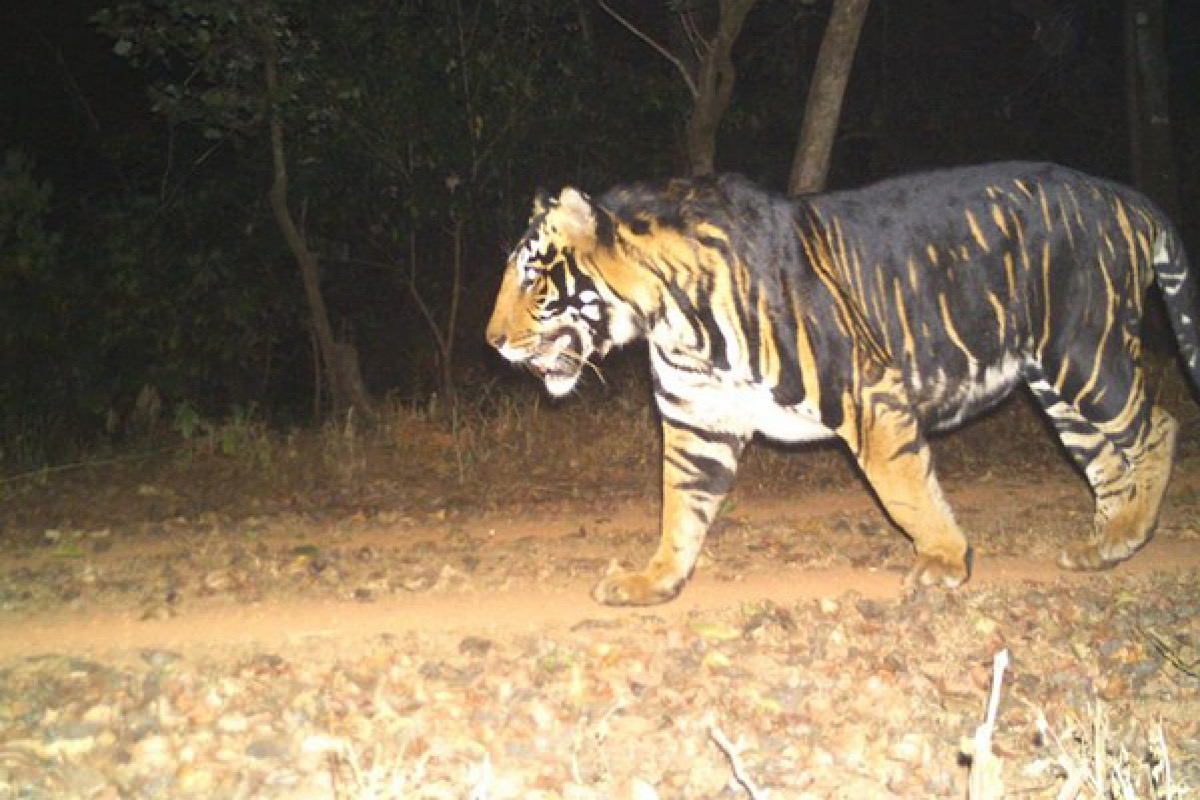The Similipal Tiger Reserve, Odisha’s largest tiger reserve, is located in Mayurbhanj district. Fewer than thirty tigers were recorded living in 1975. The decreasing tiger population has been a matter of concern in the reserve. 29 tigers were counted in a last census done in 2016 using both pugmark and camera trap techniques.
For years, the protection and management of such a small population of black tigers in the Similipal Tiger Reserve have proven to be a challenge for forest officials.
The parent population of melanistic tigers is only found in Similipal, India.
It is one of the largest biospheres in India. It is a national park as well. It derives its name from ‘Simul’ (silk cotton) tree. It was declared a biosphere reserve by the Government of India in June 1994.
Advertisement
It lies at the eastern end of the eastern ghat and is located in the northern part of Odisha’s Mayurbhanj district.
It is spread over 4,374 sq. km, out of which 845 sq. km. is core forest (tiger reserve), 2,129 sq. km is the buffer area and 1,400 sq. km is transition space.
It boasts tropical semi-evergreen forests, tropical moist deciduous forests, dry deciduous hill forests, high-level sal forests, and sprawling meadows. Sal is a dominant tree species.
The reserve is home to a wide range of wild animals, including mammals like tigers and elephants, as well as species of birds, amphibians and reptiles, all of which collectively highlight the biodiversity richness of Similipal.
It also houses melanistic tigers, which are found only in Odisha.
The Similipal Tiger Reserve (STR) is the only tiger habitat in the world with melanistic tigers, which have broad black stripes running across their bodies and are thicker than those seen on normal tigers.
Black Tigers are a rare colour variant of the tiger and are not a distinct species or geographic subspecies. The abnormally dark or black coat in such tigers is termed pseudo melanistic or false-colored.
If any tiger from Similipal is picked, the chance that it carries the mutant gene is almost 60 per cent. The darker coat colour of the mutants offers them a selective advantage when hunting in the dense closed canopy and relatively darker forested areas of Similipal as compared to the open plains of most other tiger habitats.











